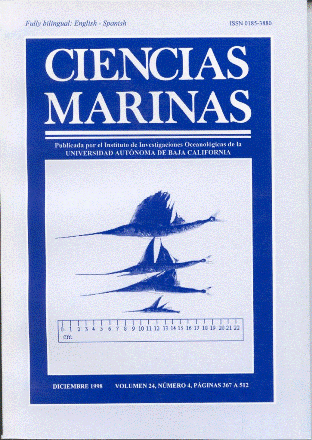Selectivity of the longline system used by the Mexican fleet in the exclusive economic zone
Main Article Content
Abstract
The longline is the most common fishing gear used to catch pelagic fish species. It consists of a principal line or mother line from which secondary lines with hooks hang. This fishing gear has demonstrated its efficiency to catch tuna, shark and billfish. The relative specific selectivity, according to some authors, seems to be influenced by factors like fishing strategy, horizontal and vertical species distribution, and the kind and size of bait. In this paper, a practica1 method to estimate hook operating depth is proposed, taking into consideration the catenary line formed by the mother line in each section. This estimate was validated with data obtained by means of a CTD meter placed at the same depth as the hooks during the longline operation. Moreover, an analysis of the species composition of the catch at each hook depth was performed. The results indicate that there is a difference of more than 30 m between operating depths in each section. Likewise, significant differences (at level α = 0.05) among catches at each operating level were observed.
Downloads
Article Details
This is an open access article distributed under a Creative Commons Attribution 4.0 License, which allows you to share and adapt the work, as long as you give appropriate credit to the original author(s) and the source, provide a link to the Creative Commons license, and indicate if changes were made. Figures, tables and other elements in the article are included in the article’s CC BY 4.0 license, unless otherwise indicated. The journal title is protected by copyrights and not subject to this license. Full license deed can be viewed here.

